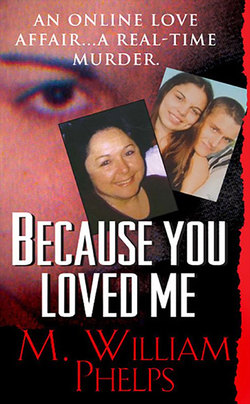Читать книгу Because You Loved Me - M. William Phelps - Страница 14
На сайте Литреса книга снята с продажи.
CHAPTER 4
ОглавлениеWith the exception of prisoners in state-issued jumpsuits picking up garbage every once in a while alongside the turnpikes and interstates just beyond town, almost everything about Nashua is steeped in long-established, traditional New England values: the clapboard white churches in front of the town’s many greens, their steeples, like arrowheads, poking into the sky; antique shops; diners and roadside hot-dog carts; cobblestone walkways flanked with oaks and maples gurgling with syrup; and the magnificent covered wooden bridges dotted among the greenery of the entire state.
Located about forty miles north of Boston, the nearest major metropolitan with a population over two hundred thousand, Nashua is the second largest city in New Hampshire (pronounced “New Hamp-shah” by local accent), with a population pushing ninety thousand (the town of Manchester housing the largest with 110,000). “Live free or die” is one of the state’s mottos. Most license plates have the powerful words stamped alongside a silhouette of the Old Man in the Mountain, a Stone Age–looking collection of granite eerily shaped in the profile of a man’s face, which used to hang off the side of Franconia Notch State Park in northern New Hampshire, but to the shock of state park officials, after sitting dormant for over two hundred years, on May 3, 2003, the popular tourist destination let loose and collapsed into a pile of rubble, falling to the base of the mountain.
One would think with Mount Washington, the highest peak in New England, rising 6,288 feet above “mean” sea level, 150 miles north, and Mount Monadnock just on her doorstep, Nashua is also situated in mountainous terrain; but its elevation is surprisingly only 169 feet, simply because the coast—in particular, Hampton Beach, one of the more popular beach resorts in the state—is a mere forty-five miles east, tucked into the lower portion of the state, nearly bordering the upper northeastern nook of Massachusetts.
Despite its large population, considering some towns in New Hampshire boast populaces in the thousands, Nashua is, when you come down to it, like a lot of towns spread throughout upper New England—a postcard, some sort of perfect Colonial-looking village inside a snow globe. On any night, one might bump into a young or old couple frolicking arm in arm down Main Street, crooked in their guiltless walk, her head on his shoulders. Laughing and kissing. Mingling in and out through the quaint little knickknack shops, bakeries and eateries, tossing romantic glances at each other. Kids might be seen riding bikes and licking ice-cream cones melting down the sides of their arms, while trailing two steps behind their parents. Merchants still have bells on their doors that ring upon entrance. Wooden wagons with rust-iron wheels from the Colonial days sit on front lawns. Historic houses with construction-dated signs from the 1600s, 1700s and 1800s are proudly displayed and kept in tact and restored, some claiming their fifteen minutes on the popular PBS show This Old House, which often shoots on location in New Hampshire and Massachusetts. Skiing is a New Hampshire pastime, a rite of passage, really—as are fishing, sailing and hiking.
Notwithstanding public attitude that crime rates are spiraling out of control throughout the nation, New Hampshire has kept its streets fairly safe: 1.8 murders per every one hundred thousand residents, making it the forty-fourth rated state for murder and forty-sixth overall in violent crime. The one murder that scores of New Hampshire natives old enough to remember can’t seem to shake, however, is that of Derry (a ten-minute drive from Nashua) resident Gregory Smart, whose schoolteacher wife, Pam Smart, was sentenced in 1991 to life in prison for plotting his May 1990 murder. Some locals claim it was the “most publicized murder case in New Hampshire history.” And very well may be. A television movie, Murder in New Hampshire, drew huge ratings and, with the help of two nonfiction books, catapulted the case into true-crime infamy. The trial was televised to huge ratings—mainly, most would agree, because of its gaudy details of sex, seduction, manipulation and, of course, murder. Smart, then a beautiful twenty-three-year-old high-school teacher, convinced William “Billy” Flynn, her fifteen-year-old lover and student, to commit the murder with the help of a few high-school chums. Without any reservation for the consequences of their actions, Billy Flynn and his mates waited for Gregory one night and shot him “execution style,” as if his death had been a hired Mafia hit.
On the one hand, New Hampshire has endured high-profile murder, an economic slump and rebirth, along with the same general pitfalls of life in the new millennium, but has managed to keep its charm, elegance and carefree image as one of New England’s most beloved settlements. On the other, what was about to happen on Dumaine Avenue on the night of August 6, 2003, as Jeanne Dominico, Chris McGowan, Nicole Kasinskas and Billy Sullivan’s lives collided inside Jeanne’s small Cape-style home, would change it all.
Once again, small-town New England was about to be rocked by a high-profile murder that, when the facts emerged, seemed senseless and inherently evil.
